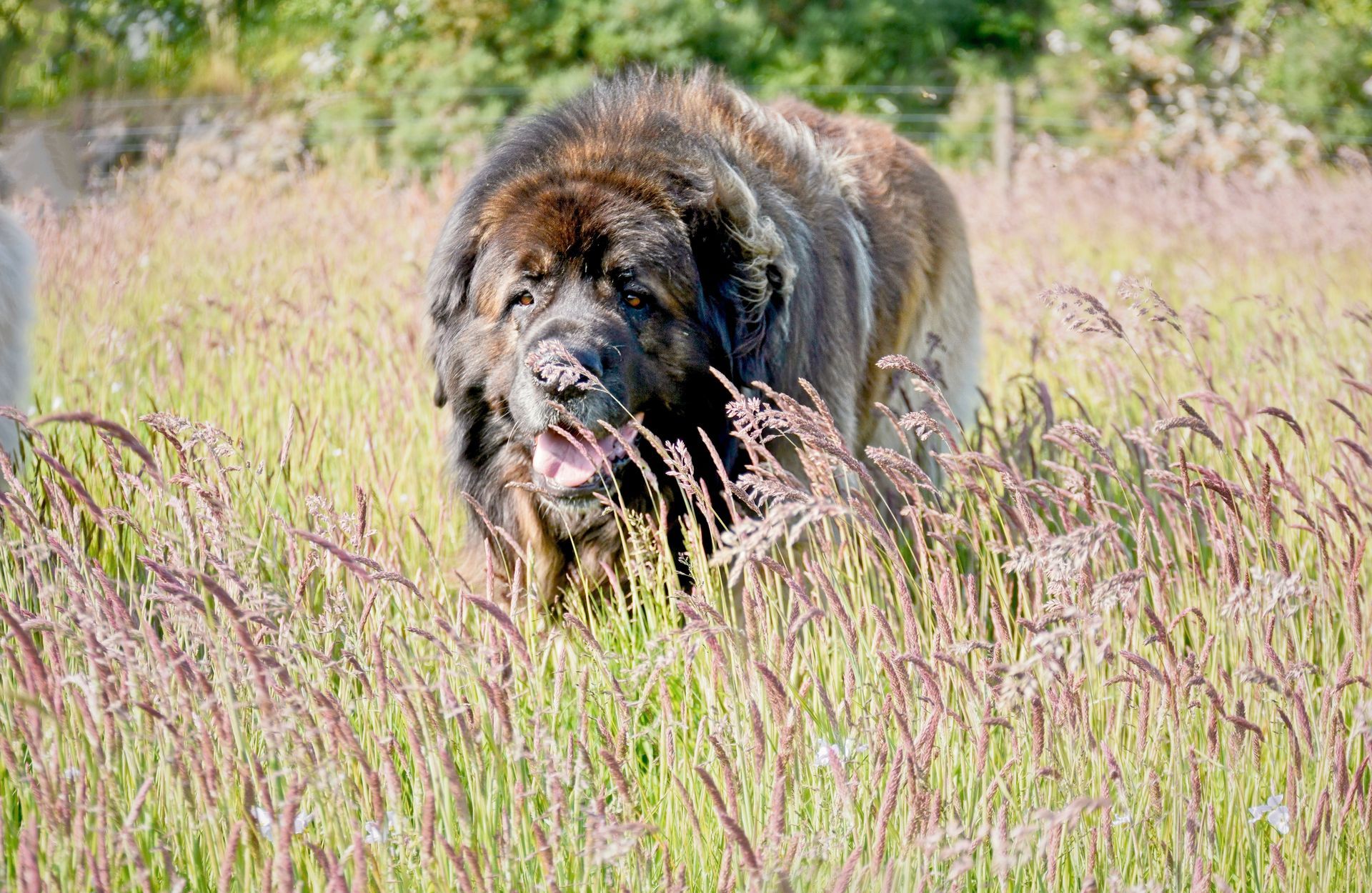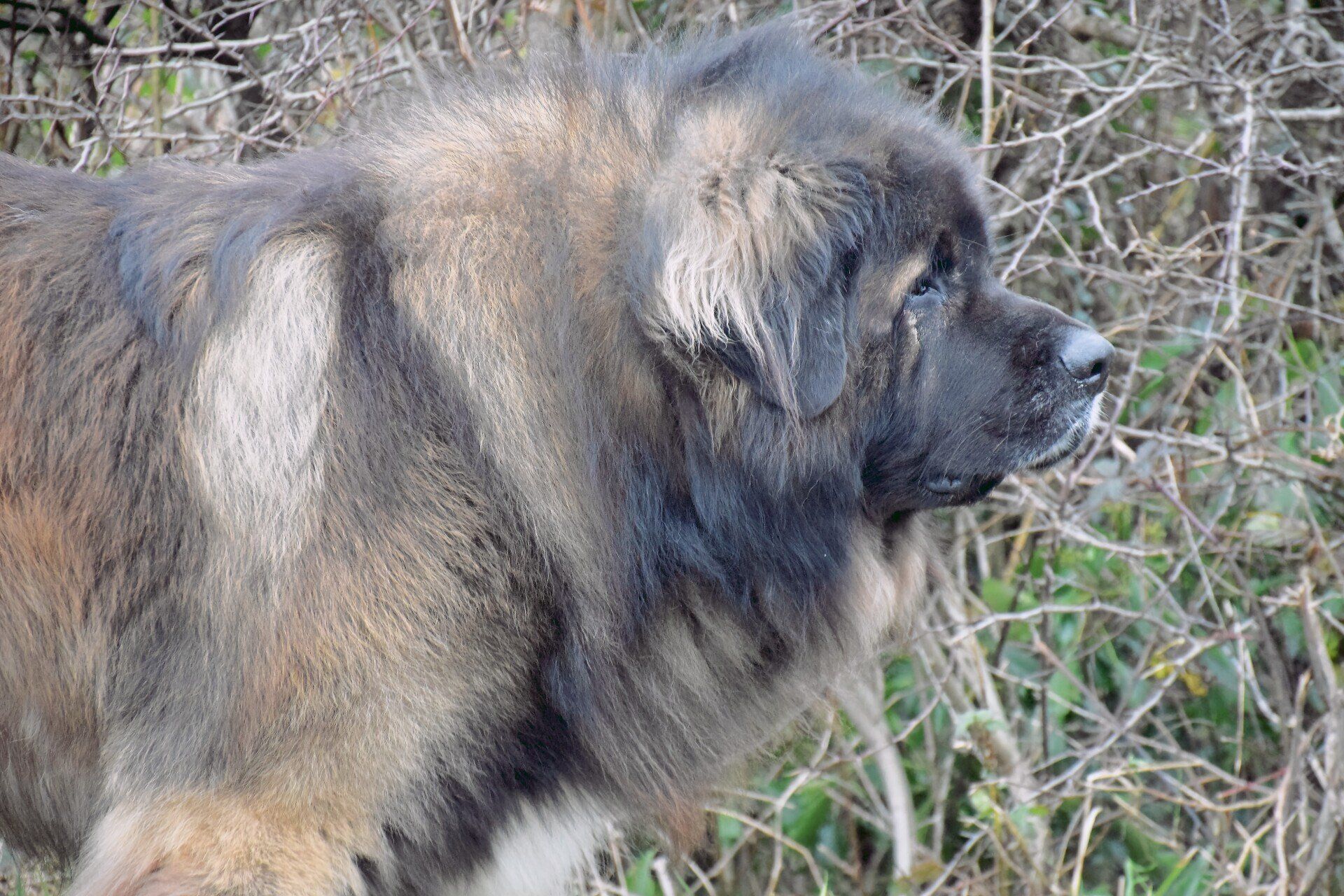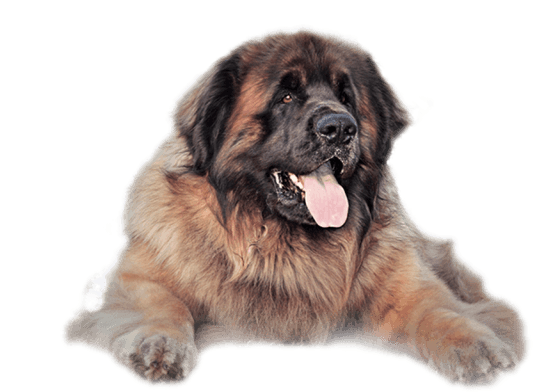The Majestic Leonberger
With a lineage steeped in history, the Leonberger breed has captured the hearts of dog lovers around the world. Originating in Germany, these gentle giants were bred for their impressive size, strength, and friendly disposition. Their unique blend of loyalty, intelligence, and playful spirit makes them not just pets, but cherished family members. Discover why the Leonberger is more than just a breed; it's a legacy of love and companionship.
The Majestic Leonberger
Distinct Traits and Qualities of Leonbergers
Gentle Giants
Leonbergers are known for their impressive size and strength, but their gentle temperament makes them perfect family companions. With a friendly disposition, they are great with children and other pets, embodying the ideal balance of power and affection.
History of the
Leonberger Breed
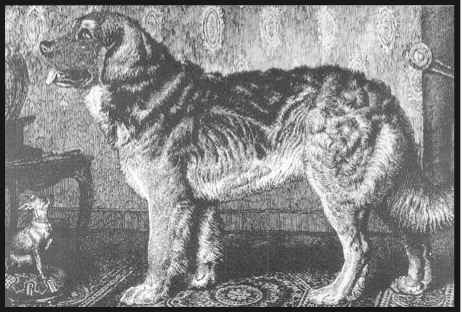
The early history of the Leonberger breed revolves around Heinrich
Essig (1809-1887) a successful businessman, politician, alderman
and prominent citizen of Leonberg, a town outside Stuttgart in southern Germany. A well-
known animal trader, he bred and sold many dogs over a period of 50 years. His dogs were
known throughout Europe for their stable, affable temperaments, soundness, vigor, aesthetic
balance, harmonic proportions and imposing size. They were exported by Essig to the United
States, Canada and as far away as Japan. At Essig’s death, his nephew took over the breeding
of the dogs and refined the Leonberger, creating a breed that was consistently representative
of the tawny colored, black masked dogs that characterize the Leonberger today. Albert Kull,
president of one of the early breed clubs was also a popular artist with an eye for detail. He
developed the first Leonberger standard in 1895, forming the foundation for all subsequent
Leonberger standards. Kull’s work did much to establish the credibility of the breed, helping the
Leonberger to flourish.
During WWI, the Leonberger was all but obliterated, but in 1922 two businessmen from
Leonberg, Karl Stadelmann and Otto Josenhans, revived the breed. Through their breeding
cooperative, enough dogs were produced to provide foundation stock to several new kennels.
Stadelmann created the first Leonberger Studbook, which continues uninterrupted to this day.
Despite the devastation of WWII, Leonbergers were bred and shown in Reich-sponsored events.
In 1948, the current German Leonberger Club replaced the club that had represented the breed
throughout the era. Under the guidance of Robert Beutelspacher, the first modern standard and
breeding regulations were written for the breed. In 1975, the German Club brought Leonberger
breed clubs from the major European nations together and founded the International Union of
Leonberger Clubs.
The Leonberger Club of America was founded in 1985 to protect and promote the breed in
North America. The LCA was granted associate membership in the International Leonberger
Union in 1990 and became a full member in 1996. The Union now meets annually in Leonberg
with other clubs from around the world to discuss the health and future of the breed.
A carefully managed breeding program with rigorous breeding regulations and an independent
Registry was maintained by the LCA from 1985 to 2007 when the breed was accepted into the
AKC, with full recognition as part of the AKC Working Group coming in 2010.
The Standard contained in this book was originally approved by the AKC Board of Directors in
October 2009, with updates approved in 2016. It is the official AKC Standard for the Leonberger
breed and has been written following AKC guidelines, while maintaining the breed’s true-to-
type look as defined in its land of origin.
Frequently Asked Questions about Leonbergers
Curious about the Leonberger breed? Here are some common questions answered to help you understand these magnificent dogs better.
What is the ideal diet for a Leonberger?
Leonbergers thrive on a balanced diet rich in high-quality proteins, healthy fats, and essential vitamins. Consult your vet for specific recommendations based on your dog's age and activity level.
How much exercise do Leonbergers need?
These gentle giants require regular exercise to stay healthy and happy. Aim for at least an hour of daily activity, including walks, playtime, and mental stimulation.
Are Leonbergers good with children?
Absolutely! Leonbergers are known for their gentle and friendly nature, making them excellent companions for children. Supervision is always recommended, especially with younger kids.
How do I train my Leonberger?
Training a Leonberger requires patience and consistency. Start with basic commands and positive reinforcement techniques. Socialization is key, so expose them to various environments and people early on.

















